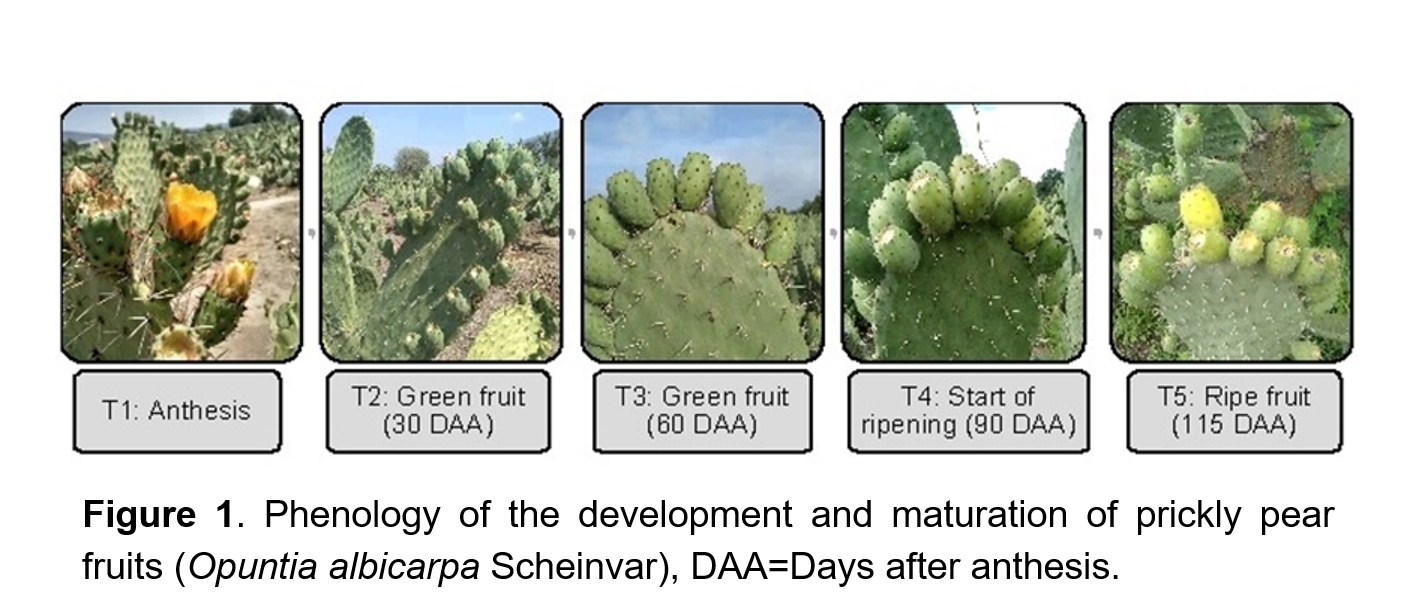Transcriptomic analysis of the development of Opuntia albicarpa fruits in relation to carbohydrate metabolism and flavonoid biosynthesis
DOI:
https://doi.org/10.56890/jpacd.v27i.590Keywords:
De novo assembly, Gene expression, Prickly pear, Ripening fruit, Metabolic pathwaysAbstract
Opuntia albicarpa is an endemic species of Mexico with cultural and economic importance. The opuntia fruits, named prickly pear or tunas, are rich in glucose, fructose, and sucrose. The objective of this study was to contrast morphological changes in the development and ripening of the fruits, and detect genes involved through transcriptomics to identify some important metabolic pathways. Total RNA from fruits of three developmental stages was sequenced in paired-end mode with Illumina technology. High-quality reads were assembled de novo and annotated against the Swissprot protein database, and differentially expressed genes between the three stages were determined. The de novo ensembled transcriptome was represented by 198,958 transcripts (41.95% GC content). A total of 22,460 and 39,683 sequences were annotated with Blastx and Blastp, respectively. In addition, 10,106 genes were identified from Blastx and 11,781 genes with Blastp. In the differential expression analysis for the comparison 60 days after flowering vs. the start of ripening, 1572 transcripts were upregulated and 412 downregulated, in 60 days after flowering vs. ripened fruit, there was an upregulation of 1265 transcripts and 454 downregulated, and at the start of ripening vs ripened fruit, 96 transcripts were upregulated and 745 downregulated. The pathways of carbohydrate metabolism and flavonoid biosynthesis during the development and ripening of fruits were analyzed to quantify the genes involved. The results can be used for genetic and molecular studies on the genus Opuntia and better understand its biology.
Publication Facts
Reviewer profiles N/A
Author statements
Indexed in
- Academic society
- Journal of the Professional Association for Cactus Development
- Publisher
- Professional Association for Cactus Development




